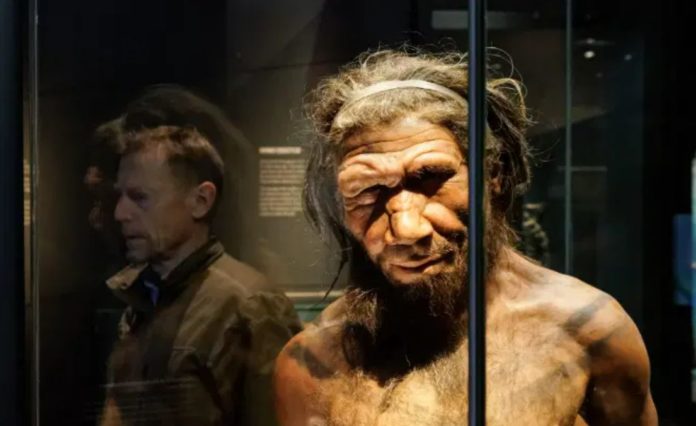11 teeth found in the cave of Jersey point towards possible interbreeding between the extinct Neanderthal species and the Homo sapiens.
The latest discovery of teeth, eleven in number, in the cave of Jersey makes an intriguing suggestion of the possible sexual encounter between the extinct Neanderthals and the Homo sapiens to have taken place. Discovered teeth show traits of both species, which is likely to be a result of the interbreeding, suggesting the existence of Anatomically Modern Human (AMH) hybrids.
- Does This Mean We Stopped Being Animal and Started Being Human Due to ‘Copy Paste’ Errors?
- The One Lifestyle Choice That Could Reduce Your Heart Disease Risk By More Than 22%
- Aging: This Is What Happens Inside Your Body Right After Exercise
- Immune-Boosting Drink that Mimics Fasting to Reduce Fat – Scientists ‘Were Surprised’ By New Findings
- Gun Violence in America: What They Don’t Talk About at the Debate
Who are Neanderthals?
Neanderthals are an extinct human race/species, widely spread during the ice age in Europe around 35,000 years ago. Belonging to the middle Palaeolithic age, the Neanderthals were characterized by distinct facial features highlighted with prominent eyebrows, and a protruding face-cut. During their existence in Europe and parts of the continent of Asia, the Neanderthals seemed to have interbred with the Homo sapiens quite often, resulting in the procreation of children.
Lost in the genes
Researches have shown that the evidence of sexual encounter between the two species has gotten buried into the human genome over a long time. According to a new researched published in the journal of Human Evolution, the DNA research suggests that a majority of Europeans acquire around 2% of Neanderthal DNA in their genes.
Latest shreds of evidence
New evidence has surfaced with the discovery of 11 teeth in the cave of Jersey – a channel island that rests between England and France. The assemblage of teeth shows combined features of the Neanderthals and Homo sapiens, suggesting that the two species might have had sexual intercourse leading to a mix of genes and the consequent mix of traits. The upper portion of teeth is characteristic of modern humans, whereas the large roots resemble the Neanderthals.
Prof Chris Stringer from the Natural History Museum stated, “The teeth from both individuals have some features which are typically Neanderthal and others which are typically anatomically modern human.”
Professor Stringer further added, saying, “Modern humans overlapped with Neanderthals in some parts of Europe after 45,000 years ago.”
- Does This Mean We Stopped Being Animal and Started Being Human Due to ‘Copy Paste’ Errors?
- The One Lifestyle Choice That Could Reduce Your Heart Disease Risk By More Than 22%
- Aging: This Is What Happens Inside Your Body Right After Exercise
- Immune-Boosting Drink that Mimics Fasting to Reduce Fat – Scientists ‘Were Surprised’ By New Findings
- Gun Violence in America: What They Don’t Talk About at the Debate
The evidence of such interbreeding amongst species has called the attention of researchers in the past as well. The earliest excavation took place in 1910 and 1911 on a site known as La Cotte de St. Brelade, where the teeth of Neanderthals were first found.
Considerable research has taken place on sites across Europe. However, the latest one has successfully managed to blow away the dust of vagueness.
